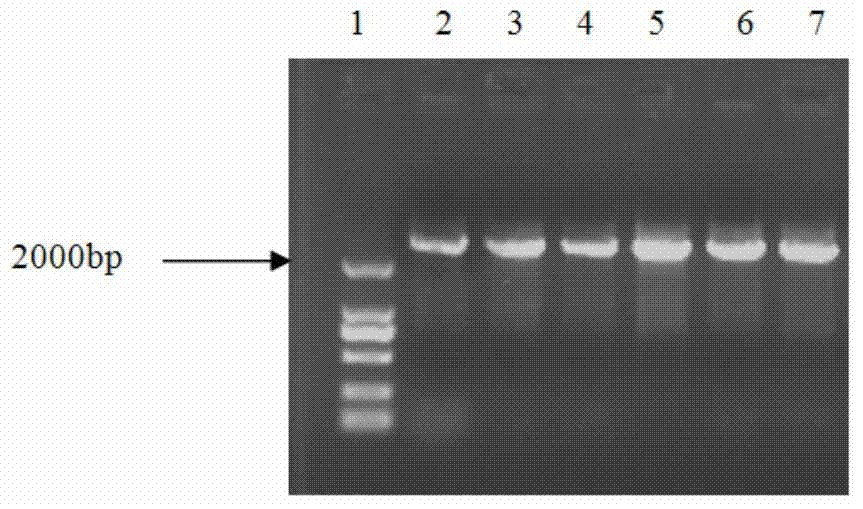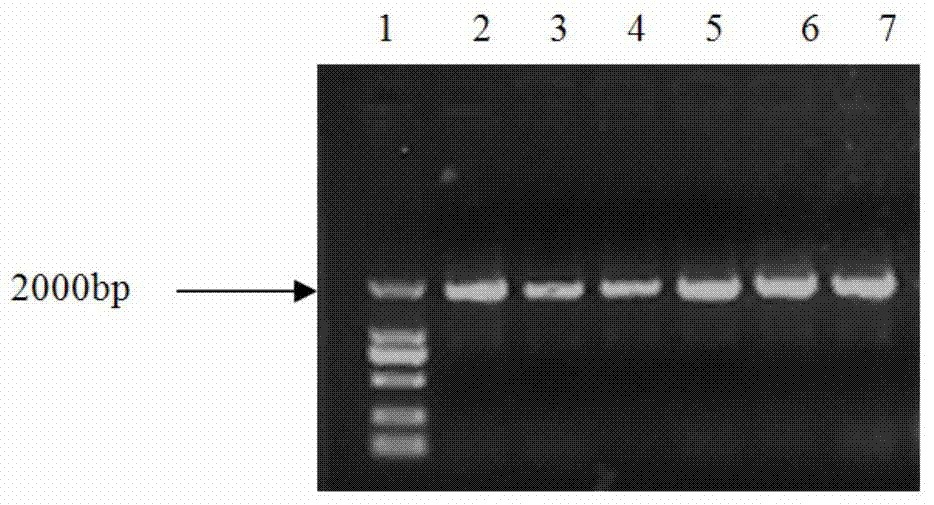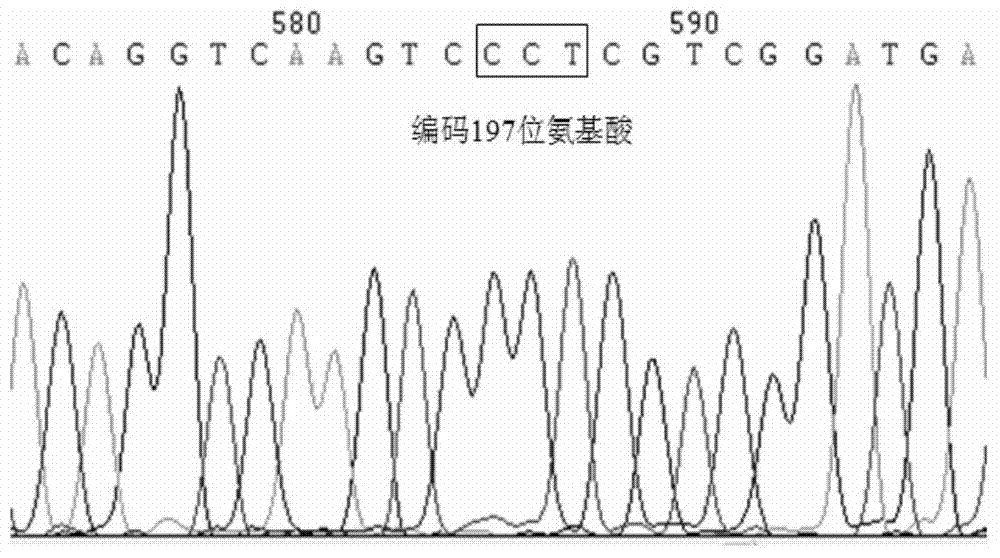PCR (polymerase chain reaction) detection method and kit of ALS (acetolactate synthetase) inhibitor herbicide-resistant descurainia sophia
A technology of Artemisia indica and herbicides, which is applied in the field of PCR detection methods and kits for anti-ALS inhibitor herbicide Artemisia indica, can solve the problems of inability to detect in season, long time, heavy workload, etc., and meet the requirements of Rapid diagnosis, simple and fast operation, and strong practicability
- Summary
- Abstract
- Description
- Claims
- Application Information
AI Technical Summary
Problems solved by technology
Method used
Image
Examples
Embodiment 1
[0037] Example 1 Synthesis of PCR Primers for Detection of Anti-ALS Inhibitor Herbicide Artemisia annua
[0038]In the GenBank database, two ALS genes of Artemisia indica, namely B-ALS-1 (K C417457.1) and B-ALS-2 (FJ715633.1) gene sequences were queried, and primers were designed according to the sequence information found. Biological software, design PCR primers for specific amplification of B-ALS-1 and B-ALS-2 genes respectively, the primer sequences are as follows:
[0039] 1) Primer pair for specific amplification of the B-ALS-1 gene of Artemisia indica:
[0040] B-ALS-1F: 5'-TCTATCTCTCGCTCCTCTCC-3' (Seq ID No.1)
[0041] B-ALS-1R: 5'-CAAACAAACAGCAGTAGCG-3' (Seq ID No.2)
[0042] 2) Primer pair for specific amplification of the B-ALS-2 gene of Artemisia indica:
[0043] B-ALS-2F: 5'-CTTCTTCTCCTCCAACGA-3' (Seq ID No.3)
[0044] B-ALS-2R: 5'-GCCATCTCCCTTCCGTTATGA-3' (Seq ID No.4)
[0045] Primer synthesis was completed by Beijing Liuhe Huada Gene Technology Co., Ltd.
Embodiment 2
[0046] Example 2 PCR detection method of anti-ALS inhibitor herbicide Artemisia indica
[0047] Experimental materials: Artemisia sophia (Descuminia sophia) collected from different regions.
[0048] experimental method:
[0049] 1. Preparation of Artemisia indica DNA
[0050] Take 200 mg of fresh leaves of Artemisia indica, grind with liquid nitrogen, and extract the DNA of each Artemisia indica leaves by conventional CTAB method.
[0051] 2. Specific primers for detecting the mutation sites of Artemisia indica B-ALS-1 and B-ALS-2, see Example 1 for the primer sequences.
[0052] 3. PCR reaction system for detecting the ALS mutation site of Artemisia indica
[0053] PCR reaction system, in which 10×PCR reaction buffer 2μL, 15mM MgCl 2 0.5 μL, 1 μL of 2.5 mM dNTPs, 0.5 μL of each 10 μM primer, 1 U of Taq DNA polymerase, 1 μL of DNA template, and sterilized double-distilled water for the rest, with a final volume of 20 μL.
[0054] 4. PCR amplification program for detectin...
Embodiment 3
[0062] Example 3PCR method for detection of Artemisia indica against ALS inhibitors in the field
[0063] The detection method is as follows:
[0064] 1. Sample collection and DNA preparation
[0065] In order to verify the feasibility of the PCR detection method, samples were collected from the farmland where drug-resistant Artemisia indica was suspected to occur, and tested in the laboratory. Plants of Artemisia indica were collected from farmland where resistance was suspected, and after proper moisturizing treatment, they were mailed to the laboratory. Take 200 mg of fresh leaves of Artemisia indica, grind with liquid nitrogen, and extract the DNA of each Artemisia indica leaves by conventional CTAB method.
[0066] 2. Specific primers for detecting the mutation sites of Artemisia indica B-ALS-1 and B-ALS-2, see Example 1 for the primer sequences.
[0067] 3. PCR reaction system for detecting the ALS mutation site of Artemisia indica
[0068] With embodiment 2.
[006...
PUM
 Login to View More
Login to View More Abstract
Description
Claims
Application Information
 Login to View More
Login to View More - R&D
- Intellectual Property
- Life Sciences
- Materials
- Tech Scout
- Unparalleled Data Quality
- Higher Quality Content
- 60% Fewer Hallucinations
Browse by: Latest US Patents, China's latest patents, Technical Efficacy Thesaurus, Application Domain, Technology Topic, Popular Technical Reports.
© 2025 PatSnap. All rights reserved.Legal|Privacy policy|Modern Slavery Act Transparency Statement|Sitemap|About US| Contact US: help@patsnap.com



